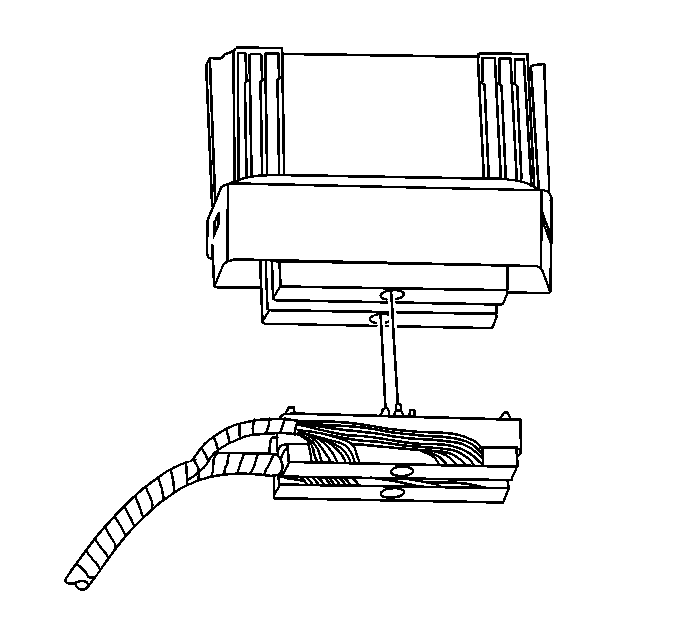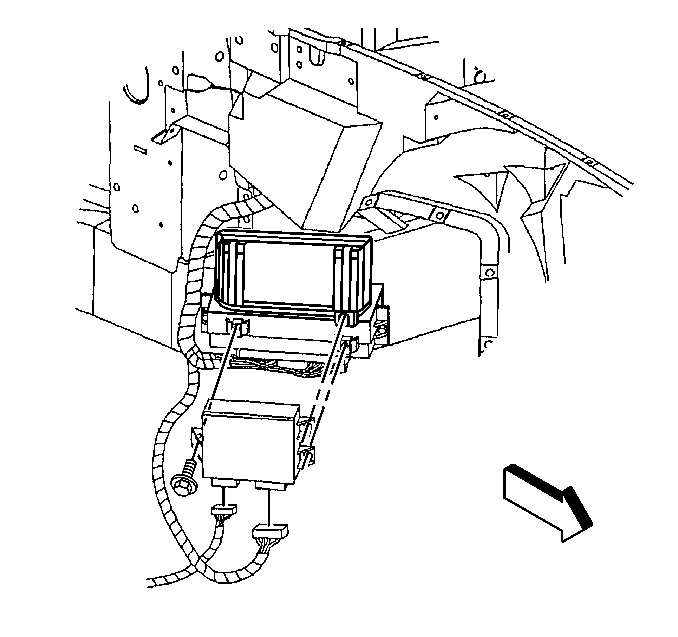Engine control module (ECM) service should normally consist of either ECM replacement or electrically erasable programmable read only memory (EEPROM) programming. If the diagnostic procedures require ECM replacement, check the ECM first to see if the correct part is being used.
Notice:
• Turn the ignition OFF when installing or removing the control module connectors and disconnecting or reconnecting the power to the control module (battery cable, powertrain control module (PCM)/engine control module (ECM)/transaxle control module
(TCM) pigtail, control module fuse, jumper cables, etc.) in order to prevent internal control module damage. • Control module damage may result when the metal case contacts battery voltage. DO NOT contact the control module metal case with battery voltage when servicing a control module, using battery booster cables, or when charging the vehicle battery. • In order to prevent any possible electrostatic discharge damage to the control module, do no touch the connector pins or the soldered components on the circuit board. • Remove any debris from around the control module connector surfaces before servicing the control module. Inspect the control module connector gaskets when diagnosing or replacing the control module. Ensure that the gaskets are installed correctly.
The gaskets prevent contaminant intrusion into the control module. • The replacement control module must be programmed.
Important: It is necessary to record the remaining engine oil life. If the replacement module is not programed with the remaining engine oil life, the engine oil life will default to 100 percent. If the replacement module is not programmed with the remaining engine oil life, the engine oil will need to be changed at 5 000 km (3,000 mi) from the last engine oil change.
Removal Procedure
- Using a scan tool, retrieve the percentage of remaining engine oil. Record the remaining engine oil life.
- Remove the wheelhouse filler panel. Refer to Fender, Insulator, Liner, Brake Caliper Cooling Duct Replacement - Front .
- Disconnect the ECM electrical harness connectors.
- Loosen but do not remove the ECM rear retaining fastener. Use the rear retaining fastener as an anchor for the outer bracket.
- Remove the front retaining fastener from the ECM.
- Reposition the ECM outer bracket.
- Remove the ECM from the bracket and the vehicle.


Installation Procedure
- Install the ECM to the ECM rear bracket.
- Position the ECM front bracket.
- Install the ECM front retaining fasteners.
- Connect the electrical connectors to the ECM.
- Install the wheelhouse filler panel. Refer to Fender, Insulator, Liner, Brake Caliper Cooling Duct Replacement - Front .
- If a new ECM is being installed, program the ECM. Refer to Control Module References .

Notice: Refer to Fastener Notice in the Preface section.
Tighten
Tighten the ECM retaining fasteners to 2 N·m (17 lb in).

Tighten
Tighten the ECM electrical connectors to 8 N·m (70 lb in).
